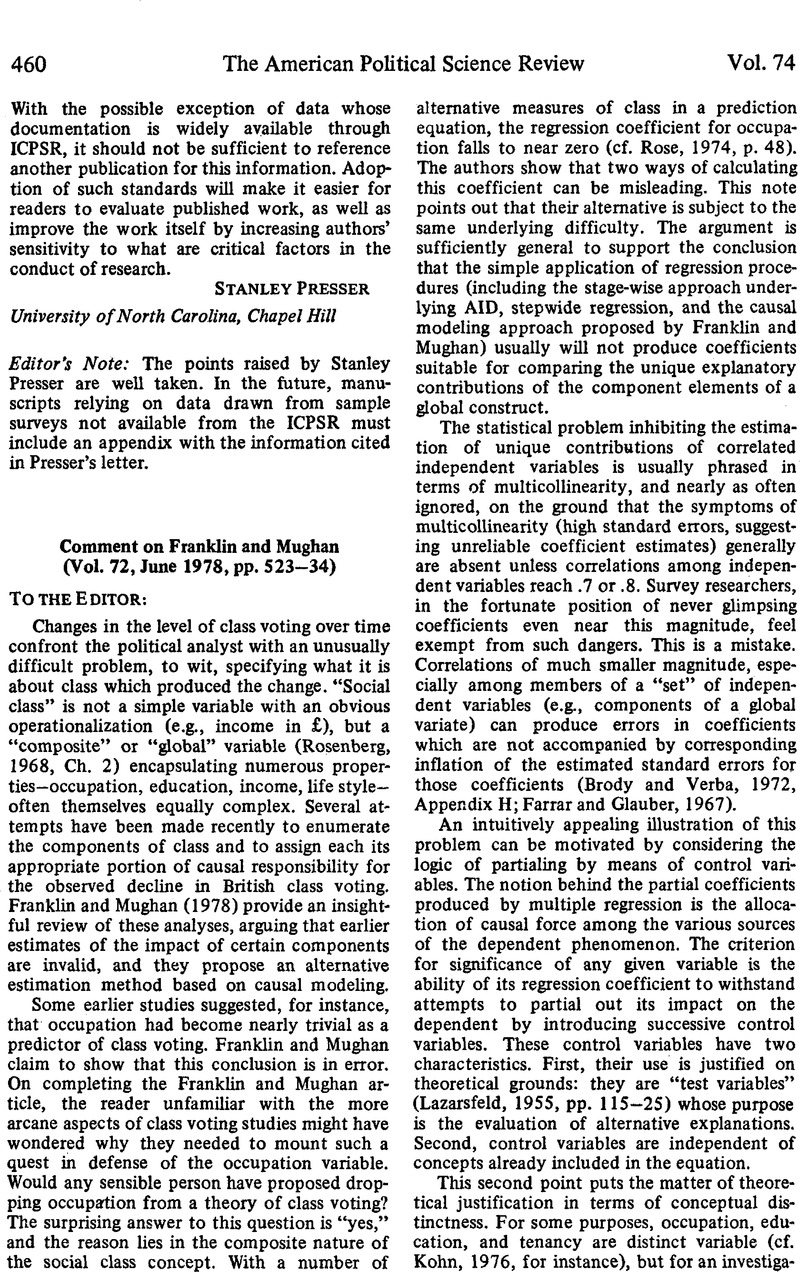Crossref Citations
This article has been cited by the following publications. This list is generated based on data provided by Crossref.
ROSE, RICHARD
1982.
From Simple Determinism to Interactive Models of Voting.
Comparative Political Studies,
Vol. 15,
Issue. 2,
p.
145.





